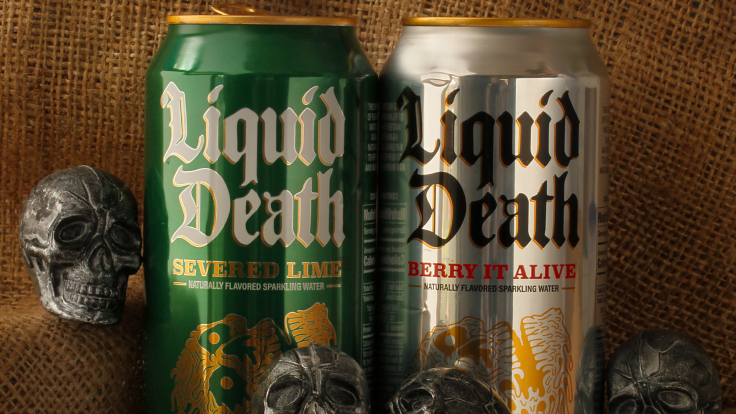Liquid Death's UK Exit: Why the Edgy Water Brand Failed to Quench British Thirst

Liquid Death, the American canned water brand known for its rebellious branding, is making an abrupt exit from the UK market just a year after its launch. Struggling to gain traction in a country where tap water dominates, the brand failed to achieve significant sales and is now halting its international expansion.
Failing to Make a Splash
The exit, first reported by The Grocer, comes after Liquid Death announced a 'temporary pause' on its international expansion. This follows its decision last summer to move production from Austria to the U.S., limiting its ability to cater to overseas markets.
Despite ambitious marketing efforts—including sponsorships for Download Festival 2024 and various Live Nation events—Liquid Death struggled to convert its bold branding into strong sales. Retailing at £5.50 for a 4x500ml pack in Tesco, the brand faced challenges convincing British consumers to swap their trusted bottled water brands or free tap water for its premium-priced cans.
According to NielsenIQ, UK sales for Liquid Death totalled just £2 million in the 52 weeks ending 7 September 2024, despite securing listings in Tesco, Iceland, Ocado, Nisa, and Co-op.
'Despite strong demand and brand awareness growth in our limited international rollout, we are temporarily pausing international efforts since we no longer have production capabilities outside of the U.S.,' a Liquid Death spokeswoman told The Grocer.
The company added that it looked forward to re-entering international markets once supply chain logistics allowed.
Why Liquid Death Couldn't Compete in the UK
Liquid Death's struggles were not due to a lack of demand for bottled water. In fact, the UK's bottled water market is thriving.
According to Statista, the UK bottled water market is projected to generate £2.12 billion in revenue in 2025, with £1.35 billion coming from supermarket and convenience store sales and £770 million from out-of-home purchases in restaurants and bars.
However, the brand faced stiff competition from well-established UK favourites like Highland Spring, Evian, and Buxton—brands deeply embedded in British consumer habits. Additionally, British consumers have easy access to high-quality tap water, making the premium-priced canned water a harder sell.
Harry Lang, founder of Brand Architects, believes Liquid Death's UK failure was a mix of marketing missteps and an inability to penetrate key retail spaces.
'They missed out on prime real estate like Tesco Meal Deals or Boots, which could have boosted sales,' Lang explained. 'Their bold brand identity—so successful in the U.S.—didn't quite translate in the UK. NFT launches, aggressive branding, and an unfamiliar format made it a niche product in a crowded market.'
'Many of us liked Liquid Death, the brand, but no one actually bought it,' he added. 'They ripped up the rulebook, but when expanding internationally, sometimes you need to read a few chapters first.'
Liquid Death's Unconventional Strategy
Founded in 2019 by Mike Cessario, Liquid Death quickly made a name for itself by disrupting the bottled water industry.
With a punk-rock, rebellious aesthetic, the brand ditched traditional water branding, instead mimicking beer cans with dark, edgy designs. Its slogan, 'Murder Your Thirst', leaned into shock marketing, setting it apart from competitors.
Viral social media campaigns, influencer collaborations, and even NFT launches helped the brand build a cult following in the U.S. However, when it came to the UK market, the brand's irreverent approach failed to resonate on a mass scale.
While Liquid Death's UK exit marks a setback for its global ambitions, it could serve as a lesson in adapting to local markets. As the company recalibrates, it may find a better approach before attempting another international expansion.
© Copyright IBTimes 2025. All rights reserved.




















